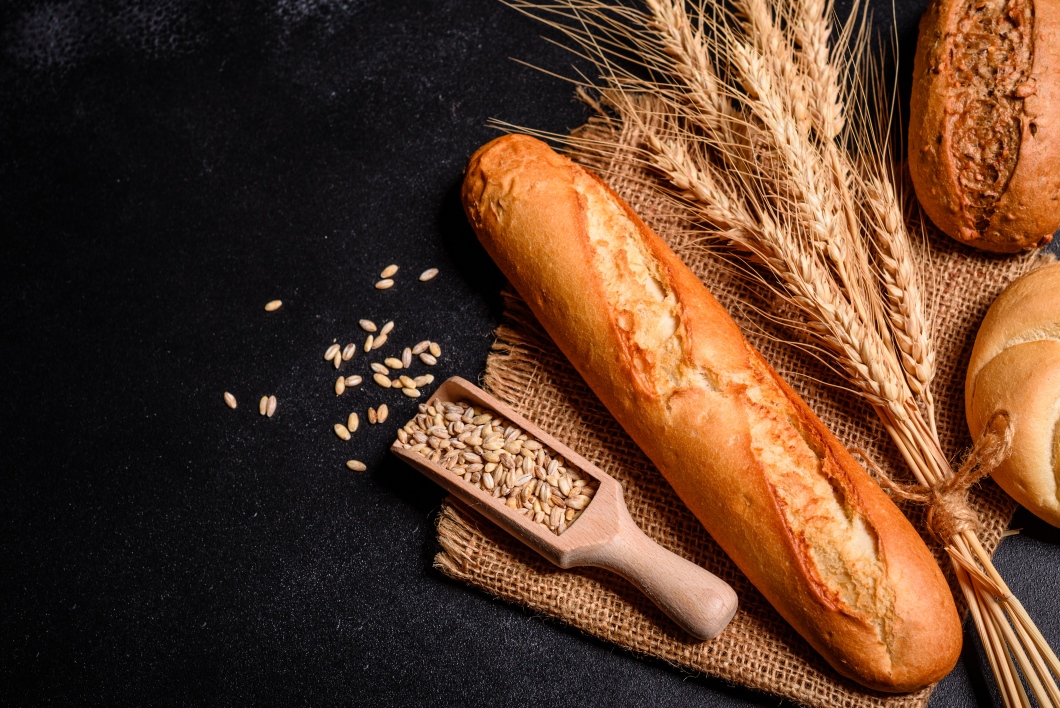When choosing the perfect bread for your family, you can’t go wrong with a classic French baguette or an Italian loaf. But which one is the best option? Here’s a quick guide to help you decide.
The difference between French and Italian bread
Regarding bread, the French and Italian versions have some key differences. French bread is characteristically crusty on the outside but tender and chewy on the inside – and in many cases, doughy. Think of a traditional french baguette loaf with a crisp outer crust that requires a sharp, serrated knife to cut through! Italian bread, however, may be either crispy or soft in texture, depending on its use. Ciabatta is often made with olive oil, giving it a more delicate texture than French baguettes. At the same time, focaccia can be fluffy and cake-like in consistency due to extra oil added to its dough. Both types of bread can be used for dipping into sauces or making sandwiches but are incredibly delicious when served as is.
The history of the two types of bread
The history of bread is rich and exciting, and there are two distinct types. The first type is leavened, which means it has a rising agent such as yeast or baking soda added to it, allowing it to expand as it bakes in the oven. This is the most common kind of bread that we eat today and can be traced back thousands of years. The second type is unleavened, meaning no rising agents have been added. This type is much older than leavened bread, with evidence that unleavened grain mixtures have been around for over 30,000 years! Flatbreads are a great example of this kind, but some cultures bake unleavened loaves, too – proving that no matter how different the ingredients might be, people worldwide know what makes a delicious meal!
How to make your own French or Italian bread at home
Making Italian or French bread home can be a fun and rewarding experience. You’ll need the right ingredients to start, like unbleached white flour, active dry yeast, and saltate the recipe; you’ll also need some essential kitchen equipment, such as a large bowl, cutting board, and measuring cups.
Once you have all your ingredients ready, follow the recipe closely and knead your dough until it is springy and soft to the touch. After that, you’ll shape your loaf into an oblong shape and let it rise for a few hours before placing it in a preheated oven until it reaches the desired crispiness. Voila – homemade French or Italian bread! Whether baking for dinner or creating a unique gift for friends and family, making this type of bread is easy to get creative in the kitchen.
The benefits of eating either type of bread
When it comes to food, bread is a staple in many households. But do you know the benefits of eating bread? While it’s true that some types of bread can be unhealthy, many kinds of nutritious and delicious bread can provide you with essential vitamins and minerals. Let’s explore why you should add more bread to your diet.
The Nutrients in Bread
Bread contains essential nutrients like carbohydrates, protein, fiber, and vitamins. Whole-wheat or whole-grain bread provides more nutrients because they have all parts of the grain kernels, including the bran, germ, and endosperm. Whole-grain bread is also higher in fiber than white bread, which helps keep you fuller longer and aids digestion.
Bread also contains essential minerals such as iron, selenium, calcium, and magnesium, which help to regulate blood sugar levels and support healthy bones. Iron is necessary for red blood cell formation, which helps transport oxygen around the body. At the same time, selenium promotes immune health by acting as an antioxidant to protect cells from damage caused by free radicals. Calcium is vital in maintaining strong bones, while magnesium helps with muscle contraction and nerve transmission.
The Health Benefits of Eating Bread
Eating bread can have several health benefits for both adults and children alike. For starters, diets that include whole grains have been linked to reduced risk for type 2 diabetes because whole-grain foods help control blood sugar levels due to their high fiber content. Additionally, consuming more whole grains can improve heart health since they are lower in fat and sodium than other foods. Furthermore, studies have shown that people who eat more whole grains tend to weigh less over time, making them less likely to become obese or overweight.
Recipes that feature French or Italian bread as the main ingredient
Regarding flavorful dishes, French and Italian bread provide chefs and home cooks with a great source of savory ingredients. From loaves of crusty pain de campagne to herbed focaccia or cheese-stuffed ciabatta, these types of bread can take any meal from ordinary to extraordinary. From the classic Panzanella salad to bruschetta topped with tomatoes and basil, or even desserts like toast tsoureki – French or Italian bread recipes are sure to have everyone at your table asking for more!
In conclusion, French and Italian bread are popular staples of many global cuisines and come in various shapes and sizes. Both types of bread boast rich histories, dating back centuries – meaning each has had plenty of time to perfect its flavor and texture. Whether baking in the comfort of your kitchen or buying from your local bakery, you can find a wide range of delicious French and Italian bread that will satisfy all tastes. Furthermore, adding either kind to your diet could provide numerous benefits due to their nutrient-dense ingredients. So, why not try one of the abovementioned recipes or invent your dish today? We hope this post was enlightening in helping you understand the difference between French and Italian bread – happy baking!

